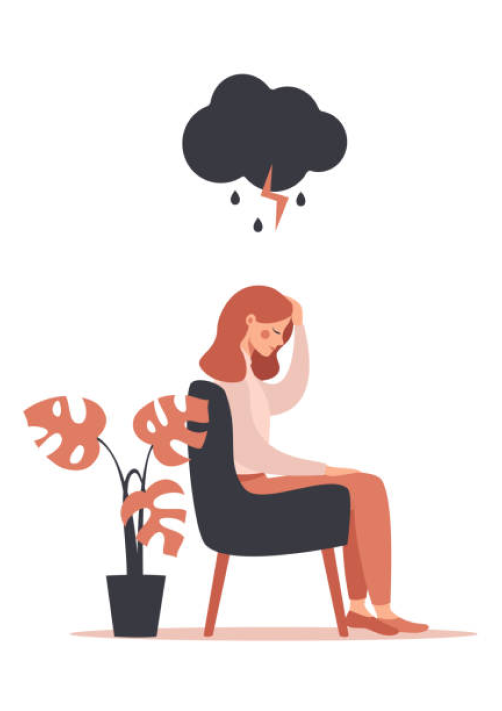DEPRESSION
Take Depression Test
A sense of hopelessness, the feeling of being “weighed down,” and a loss of enjoyment in things that used to bring you joy — these are some common signs of depression, one of the most widespread mental health issues in the world.
Depression symptoms take many forms, and no two people’s experiences are exactly alike. A person with depression may not always seem sad to others. And when friends or family do notice signs of depression, they may want to help but not know how.
Depression symptoms and diagnosis
If you’ve experienced most of the following symptoms every day over 2 or more weeks, you might meet the criteria for a depression diagnosis:
• a persistent feeling of loneliness or sadness
• lack of energy
• feelings of hopelessness
• getting too much or too little sleep
• eating too much or too little
• difficulties with concentration or attention
• loss of interest in enjoyable activities or socializing
• feelings of guilt and worthlessness
• thoughts of death or suicide
Types of depression
While MDD is the main diagnosis associated with depression, there are also other kinds of depression. Each form of depression has its own set of symptoms.
Major depressive disorder (MDD)
If you experience a loss of pleasure in activities you used to enjoy, along with a depressed mood that lasts at least 2 weeks, you might meet the criteria for MDD. In children and teens, MDD can also look like irritability rather than sadness.
Postpartum depression
Typically, postpartum depression can begin in the first month after giving birth, but it can also begin during pregnancy. If you have a history of depression, you may be more likely to experience postpartum depression.
Seasonal affective disorder
Is a subtype of depression triggered by seasonal changes. Though it’s more common in the winter and fall months, it can occur in the summer as well.
Persistent depressive disorder (dysthymia)
Previously known as dysthymia and chronic major depression, is a form of depression that lasts for at least 2 years.
Bipolar disorder depression
Some forms of bipolar disorder involve depressive episodes. Treatment for bipolar disorder depression can differ from other depression treatment approaches.
Depression risk factors and causes
As with most mental health conditions, researchers still aren’t sure what causes depression. But most experts consider the following to be contributing factors:
Depression treatment
Can depression actually be successfully treated? The short answer is yes.
• Psychotherapy
• Self-help strategies
• Medication
Living with depression
If you live with depression, simply waking up in the morning and getting out of bed can feel like a struggle.
Everyday tasks — like showering, eating, or going to work or school — can sometimes feel like large hurdles to a person living with depression.
One key to managing living with depression is ensuring you’re receiving treatment or taking steps to build a solid self-care routine. Treatment could include therapy, medication, or both.
Also, being an active participant in your own wellness plan can be helpful. While this can require effort, it can be done. For some people with depression, leaning on a support network or trusted loved one can help.
Establishing self-care routines is important in managing depression. Getting regular emotional support — for instance, through an online support group — can also be beneficial.
Next steps
Recovery from depression can take time, but there is hope. There are many steps you can take to manage depression.
You can begin by talking with someone — anyone — about your feelings and finding some immediate emotional support through the sharing.
Some people begin by talking with their family physician. A medical professional can also offer referrals or encourage you to continue your treatment with a mental health specialist.
When it comes to managing depression, your first step can connect you with the resources you need to manage your symptoms and thrive.